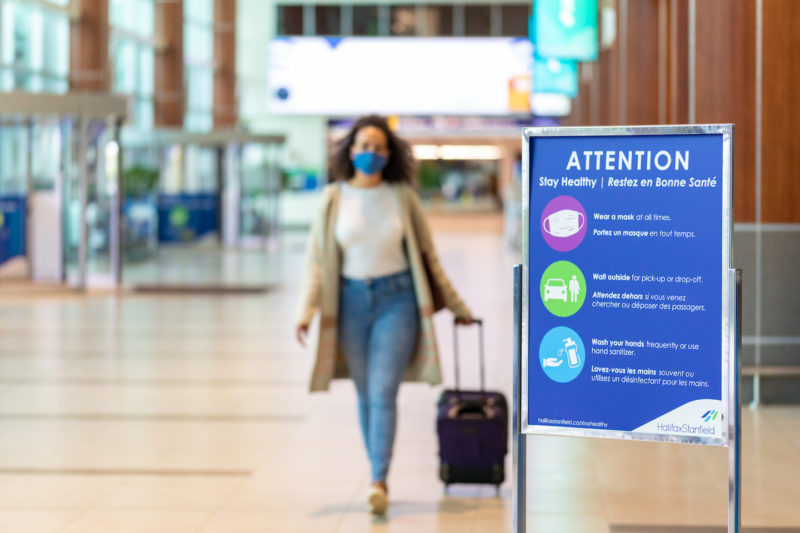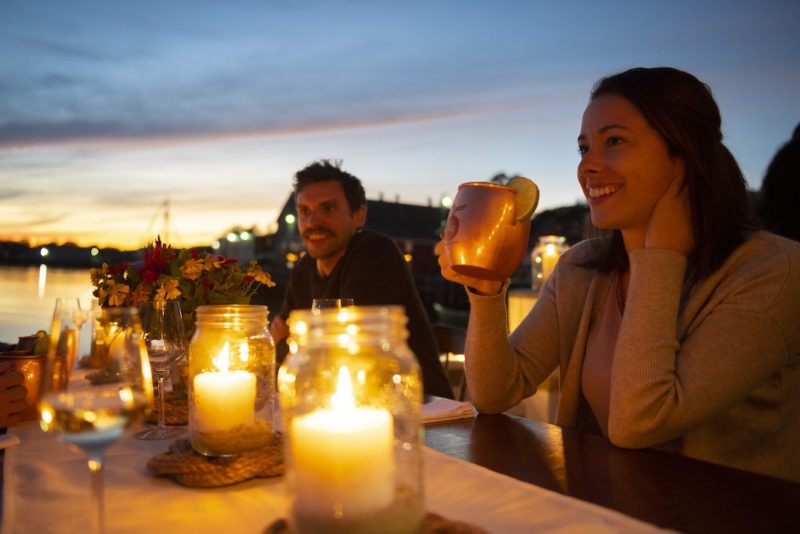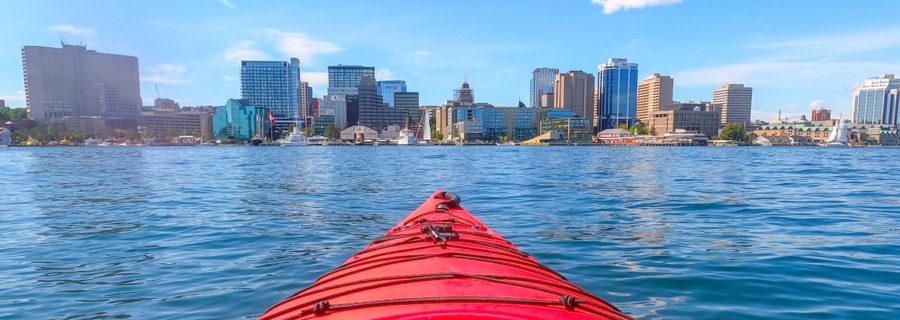Nova Scotia is known around the world for our coastlines, fresh lobster and maritime hospitality. While the natural beauty puts Nova Scotia on the map, tourism is also a crucial and vitally important economic sector in our province.
Employing more than 39,000 people and generating about $2.64 billion in 2019 revenues (stat from Tourism NS), tourism is one of our economic engines. The sector has been hard-hit since the pandemic started, with travel restrictions in place both in and out of the province. The travel pause is causing a ripple effect across our provincial economic recovery.
“Tourism is composed of many small and medium sized businesses across Nova Scotia, in every community,” says Jennifer Angel, President and CEO of Develop Nova Scotia. “These businesses are often our local favourites: the icing on our main streets, to shop on a Saturday, the artists and craftspeople whose hands we are proud to gift from, our place for date night dinner or a leisurely brunch, or the best places to take a selfie and enjoy a rejuvenating weekend away.”
Both private and public entities have been making a significant and collective effort over the past decade to establish tourism as a key economic driver in Nova Scotia. And pre-pandemic, their endeavours were lucrative.
“Leveraging our beautiful landscapes, local talent and vibrant towns and cities, we have successfully put Nova Scotia on the map as one of the most desirable tourism destinations around the world,” says Tiffany Chase, Director, Public Affairs & Marketing, Halifax International Airport Authority.
Airport connecting Halifax to the world
The Halifax International Airport Authority (HIAA) plays an important role in enabling the growth of tourism in Nova Scotia. HIAA’s geographic location on Canada’s East Coast enabled it to sell Halifax Stanfield as an Atlantic Canada hub airport and an entry point to Canada to key tourism markets in the United States, Europe and beyond.
“In 2019, one-third of all visitors to Nova Scotia arrived by air, and we know these visitors tend to stay longer and spend more while they are here,” says Chase.
Invested in attracting new air service over the past decade, HIAA saw steady annual increases in passenger traffic and the number of destinations connected to Halifax Stanfield. Before the pandemic, it connected Halifax to 46 destinations in Canada, the United States, and international locations around the world.
“HIAA remains focused on doing everything it can to ensure our communities remain connected to domestic, transborder and international destination when the pandemic subsides, and it’s time to travel again,” says Chase.
Develop NS driving local tourism
Develop Nova Scotia is aiming to build places beloved by people to attract people. This aim does not have tourists in mind but locals––since local, rich and diverse cultures are what tourists ultimately seeking.
“We are working to focus not on tourists but on people, locals actually,” says Angel. “Our experience shows that when we build places for locals that locals love, the authenticity of the place shines through.”
“They become beacons for people to enjoy as part of their everyday lives. And we know that tourists are looking to do what the locals do, which culminates in authentic experiences in great places.”
The primary focus is building consumer confidence and creating conditions to bring the local community back together. This is planned to be executed in compliance with public health and safety, as expected, but at the same time in an extraordinarily attractive and special fashion to restart tourism.
“We will create safe places to gather, engage and amplify local business products and services,” says Angel. “We will support the creation of online opportunities and digital marketplaces, encourage outdoor events and activities that can be scaled, and extend our season with opportunities for all local businesses to participate.”

Contingency planning
With mass vaccinations currently being administered across Canada, consumers’ confidence has started to increase, regardless of new developments and bumps in the road to recovery.
“If it’s safe to open, we are ready with reasons to come out,” says Angel. “We are focused on creating events and experiences that are sufficiently interesting to bring people out, but that are scalable to adapt to the public health situation of the moment.”
This year, once again, Develop NS will engage communities across the province to build their own local activation during the holiday season in person and online, like last year’s Evergreen Festival.
The organization issued a public call for events and activations for this spring, summer and fall seasons. In partnership with Events East, they’re working on a ‘Patio Lanterns’ campaign to debut this summer, in hopes of drawing in people to the downtown Halifax core.
“And we will continue to identify opportunities to work with communities right across the province,” says Angel. “We will support local interests and ambitions to create places that will attract people, host events and gatherings, and attract tourists back when it is safe.”
Last year, Tourism Nova Scotia’s summer marketing campaign in Nova Scotia generated $34 in direct tourism spending for each $1 invested in the campaign. Tourism Nova Scotia is also working with tourism businesses to develop packages aimed at Nova Scotians that will encourage them to get out and enjoy the province, when conditions permit.
Alongside these restart-tourism plans, Develop NS has critical contingency plans in place. With a laser focus on small business continuity and recovery, the organization knows it will take time to continue building consumer confidence and social license for tourism visitors.
“When it’s safe to travel, we anticipate Nova Scotia will be on many peoples’ lists and we want to be ready,” says Angel. “It’s important we rebuild that confidence and give people a reason to get out, while keeping people safe.”
Airport testing is another measure strongly believed to have the potential to contribute to increasing consumer confidence. It is bound to enable adjustments to domestic and international quarantine requirements. This can lead to an increase in summer travel plans.
“We know many Canadians have stayed apart from family, friends, colleagues and clients for more than a year to help reduce the spread of COVID-19 in our communities,” says Chase.
The anticipated increase in travel demand come summertime has encouraged airlines and other airport service delivery providers to start preparing. “Working with Tourism Nova Scotia and Discover Halifax, our team sells Nova Scotia to the airlines as a preferred destination and provides the airlines with information and research to ensure they understand the demand and opportunities for tourism in our market,” says Chase.
Once restrictions are lifted, HIAA anticipates the domestic market will rebound initially through a spike in demand by visiting families and friends. The team has been working closely with airlines on the re-introduction of core domestic routes to ensure full connectivity across the country. Eventually, HIAA will continue to focus on expanding domestic routes as well as the resumption and growth of U.S. and European destinations connected to Halifax Stanfield.
HIAA also expects the ‘Stopover Halifax’ program will be re-launched in 2022 as part of its COVID-19 recovery plan. Before the pandemic and in partnership with Discover Halifax, the program used to encourage visitors connecting through Halifax Stanfield to extend their time in the province and explore the many attractions Nova Scotia has to offer.

Nova Scotians have a role to play
“As residents of Halifax and Nova Scotia, we can become the best ambassadors for attracting visitors to our beautiful province,” says Chase. “Nova Scotians should explore all that we have to offer and encourage our families and friends to come visit when it is safe to do so.”
When the time comes and it’s safe to travel, Nova Scotians are encouraged to take advantage of numerous air routes to ensure their longevity. This will also support restarting a healthy tourism economy going forward. HIAA’s access to many destinations within the region, country and the rest of the world will eventually resume and then it will be Nova Scotians’ much-needed support that can revive tourism.
“We have implemented a variety of globally recognized airport health and safety measures throughout the pandemic, contributing to the wellbeing of passengers and airport workers,” says Chase. “We are ready to support travellers and make them comfortable on their next journey when the time is right to travel again.”
Develop NS cannot overstate the importance of Haligonians and Nova Scotians acting as tourists in their own towns. If individuals are not confident to travel just yet, they can invest their travel budgets on main streets and in small businesses across the province who need support more than ever.
“Be the tourist we need to see and the tourist in your own town that you’d typically be elsewhere,” says Angel. “Nova Scotia is amazing, so check it out!”
Nova Scotians have a strong collective purchasing power. It can be the difference between keeping doors open or closed for a beloved local business. From the smallest to the main street businesses, these establishments are part of our local community located right in our backyard for our very own enjoyment.
“Nova Scotians travelling around the province in 2019 accounted for approximately $800 million in tourism spending at Nova Scotia businesses,” says Angel.
Pre-pandemic, Nova Scotians generated about $1.6 billion in tourism revenues (stat from Tourism NS). Retail businesses, restaurants, hotels and other accommodations, festivals, events, and many non-profit arts and culture organizations rely not only on visitors from outside the province to survive and thrive, but also Nova Scotians travelling around the province.
“COVID has clearly demonstrated that tourism businesses are critical to the health of our overall economy, not just our tourism sector, because they contribute so much to our quality of life and well-being as residents,” says Angel. “And they contribute to our magnetism to retain talent and to attract new residents as another key driver of our economy.”
Tourism Nova Scotia is also focusing on working with those critical businesses and organizations. Together, they are developing products and experiences particularly attractive to Nova Scotians and out-of-province visitors and encourage travel to and around the province.
“For the first time in generations, visitors had the opportunity in 2020 to connect with Atlantic Canada’s rich and complex history on Georges Island National Park through the work of a number of partners,” says Angel. “Plans have rolled out for this season to reach the Island through boat tours as well by private boat, canoe or kayak.”
Develop NS will keep building on the natural quality of place advantage in Nova Scotia. Through many partnerships and connections with diverse communities, the organization is planning to build attractive places that foster a sense of belonging for everyone.
“These places are becoming beacons for all types of people to enjoy,” says Angel.■

< Back to Articles | Topics: Responsible Business

